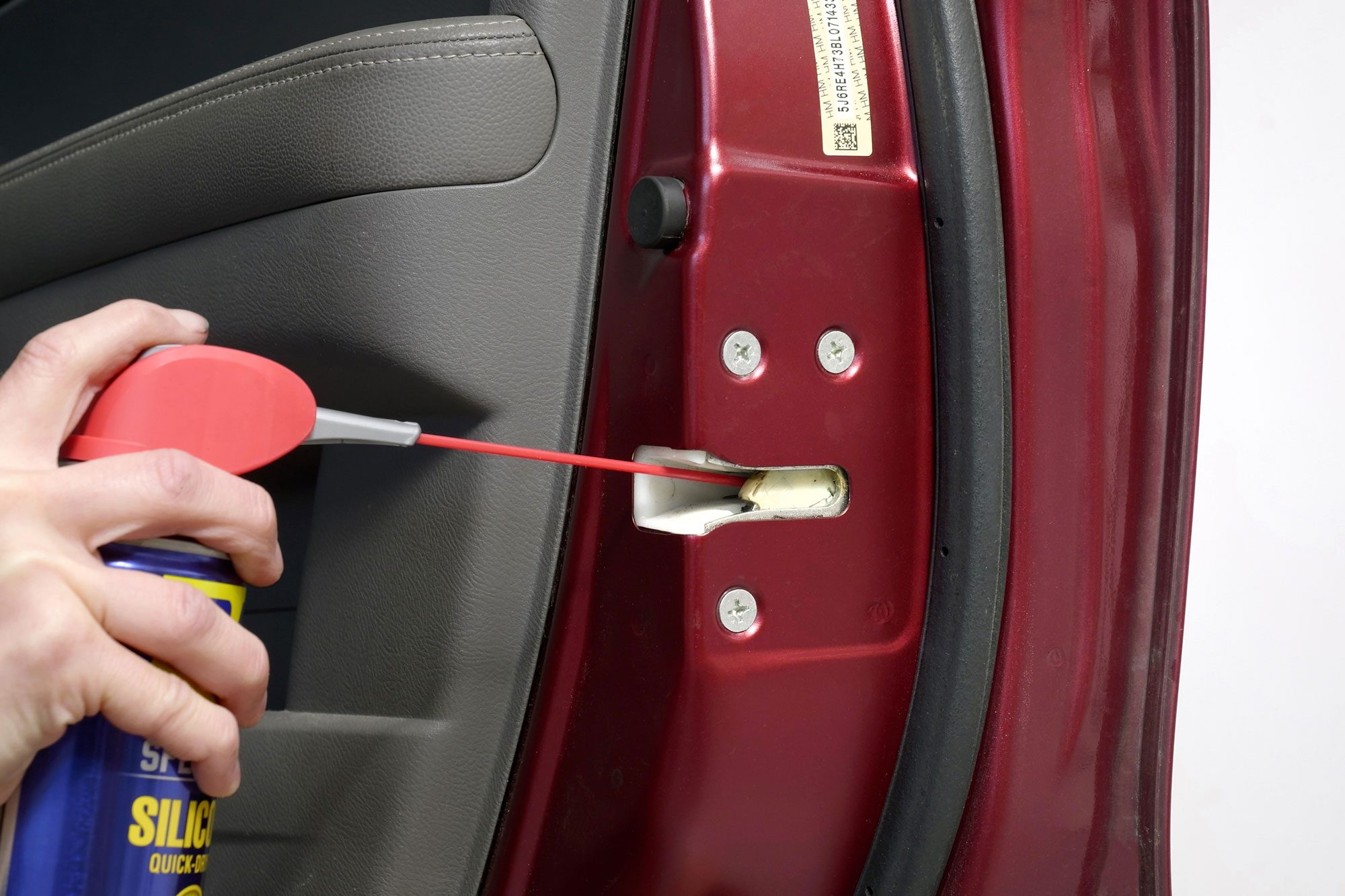Eliminate annoying squeaks from your car by lubricating door hinges, latches and locks.
10 minutes
Beginner
Around $40
Introduction
Get rid of those annoying squeaks in your car by spending about ten minutes lubricating your car or truck. These simple yet small lube job tips will bring back that new-car quiet ride.Tools Required
- Rags
Materials Required
- Graphite lubricant
- Silicone spray
- WD-40
- White lithium grease
A few weeks ago, the latch in my car door got stuck, blocking the door from closing. After a few crude attempts at jostling it, I knew it was time to purchase a silicone spray to lubricate it. It was then that I realized my “new” car wasn’t all that new anymore and needed some up-keep. Naturally, the first thing I decided to spend some time on was lubricating all my car’s locks, hinges, and latches.
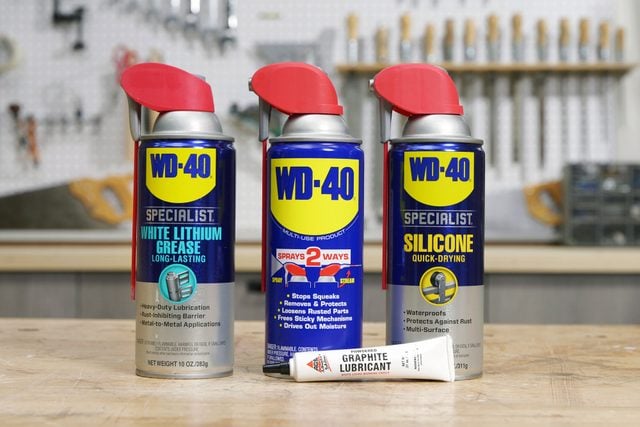
All you need for this project are a variety of inexpensive lubricants, which can also come in handy for other household problems:
- White lithium grease is good for metal-to- metal joints like hinge and latch mechanisms, which need a clinging grease to repel water and hold up under harsh conditions.
- WD-40 is best for light-duty lubrication and freeing up sticking or partially rusted hinges and latches.
- Silicone spray is great for lubricating nylon, plastic and metal when only a thin layer of lubricant is necessary. Because silicone dries, it won’t get your clothing greasy.
- Graphite lubricant is the right choice for locks as it won’t attract dirt to fine lock mechanisms like an oil would.
Project step-by-step (9)
Lubricate locks
- We don’t think much about our car door locks until the key breaks off in the cylinder. Keep these delicate mechanisms moving freely with a blast of dry graphite powder.
- You may need to push the dust protector flap back slightly with a small metal nail file or a flathead screwdriver to get at the lock.
- A quick pump of the tube will dispense enough graphite. Move the lock cylinder with your key several times to work the graphite into the mechanism. Do this to your trunk lock as well.
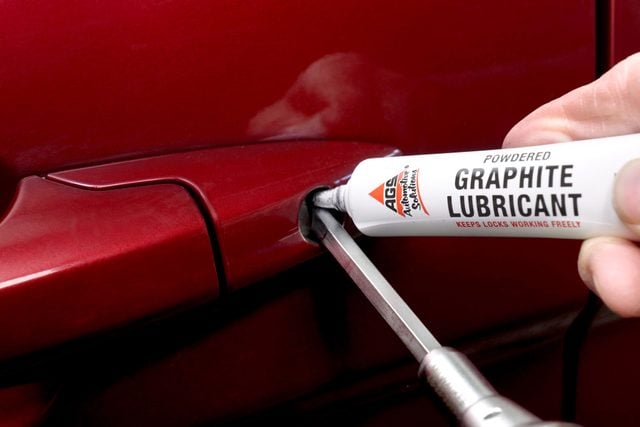
Lubricate gas tank hinge
The gas tank lid can really take on abuse, particularly in harsh winter climates where road salt is frequently used. Give it a squirt of WD-40 a few times a year to keep it from rusting. Wipe away any excess to keep it from dripping onto your car’s finish.
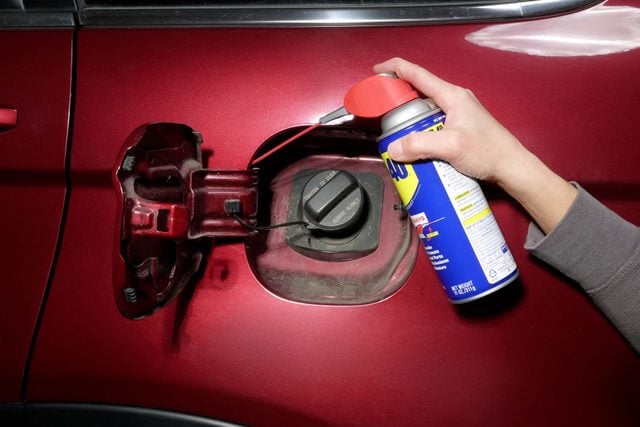
Spray car door hinges with WD-40 and lithium grease
- If the door squeaks every time you open it, it’s possible the car door hinge is bound by corrosion.
- If so, squirt the hinges with WD-40 to free them, and move the door several times to work in the lubricant.
- Once the hinges are in working condition, just squirt them with white lithium grease, operate the door several times and then wipe any excess away.
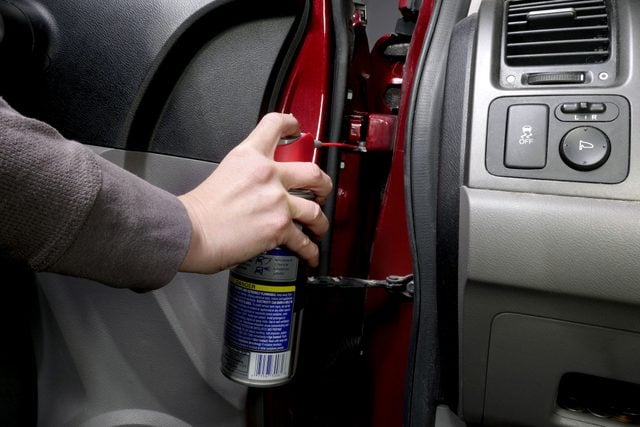
Lubricate car door latches
Check the car door latch mechanism for corrosion. Many door latches now have a nonmetallic composite mechanism, which should be lubricated with a shot of silicone spray.
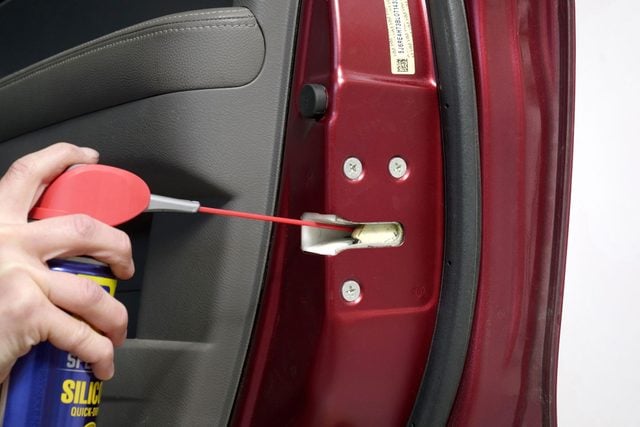
Spray hood hinges
Wipe the hinge area with a clean rag if needed and spray it with white lithium grease or a few drops of ordinary motor oil. Move the hinge several times to work the grease into the hinge. Be sure to get it into both sides of each car hinge. Wipe away the excess to keep it from collecting debris.
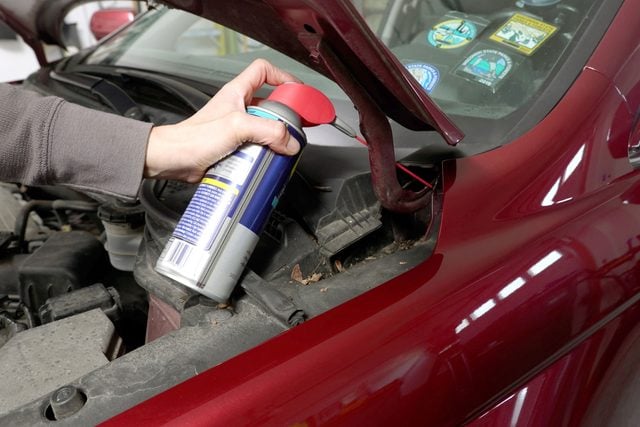
Spray trunk door hinges
Lubricate the trunk hinges using the same method you used for the hood hinge. However, don’t lubricate the gas struts that slow the trunk movement because you could ruin them.
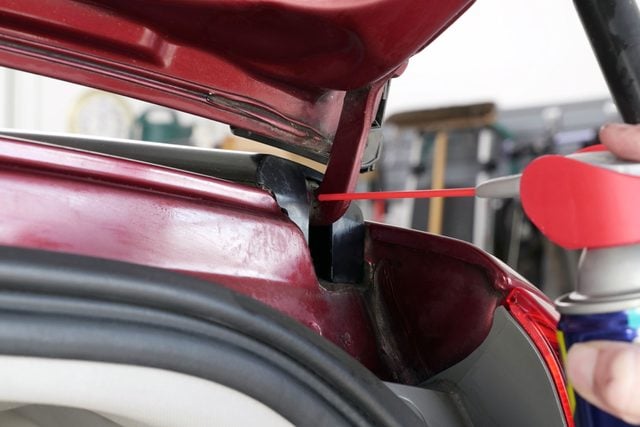
Clean hood latch and spray
- Wipe the grime and dirt away with a clean cloth. Try to get any bits of sand that may be embedded in the existing grease.
- If you see rusted or stuck parts, give the latch a spray of WD-40, then move the mechanism several times.
- Wipe it again and give it a liberal coating of white lithium grease.
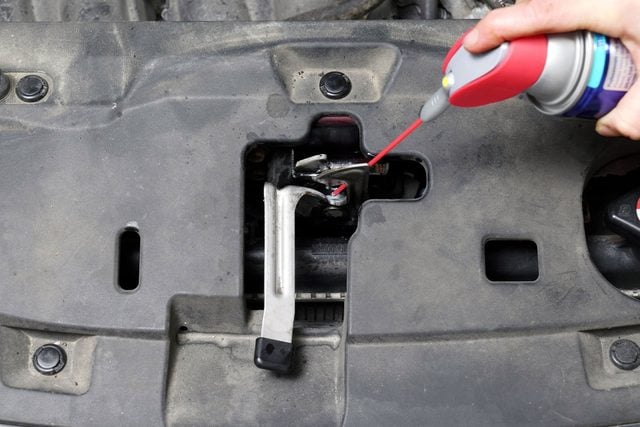
When to Call a Pro
If latches or hinges don’t do their job and these steps don’t help, it’s time to call a credible car mechanic. These mechanisms are too important to safety to not work properly, so make sure to bring it in ASAP.
FAQ
Is it OK to put WD-40 in a car door lock?
WD-40 should not be used to lubricate a door lock. It is solvent based and will evaporate over time leaving a residue that will eventually gum up the works. Graphite lubricant is the right choice for locks as it won’t attract dirt to fine lock mechanisms like an oil would.
Can you use Vaseline on car door hinges?
Vaseline will solve a squeaky hinge but it can be difficult to get into crevices and wont hold up as well as white lithium grease. White lithium grease is a better for metal-to- metal joints like hinge and latch mechanisms, which need a clinging grease to repel water and hold up under harsh conditions.
How often do you need to lubricate a door lock?
To extend the life of your door lock, it is recommended to spend 10 minutes twice a year to lubricate door locks, hinges, and latches.




















